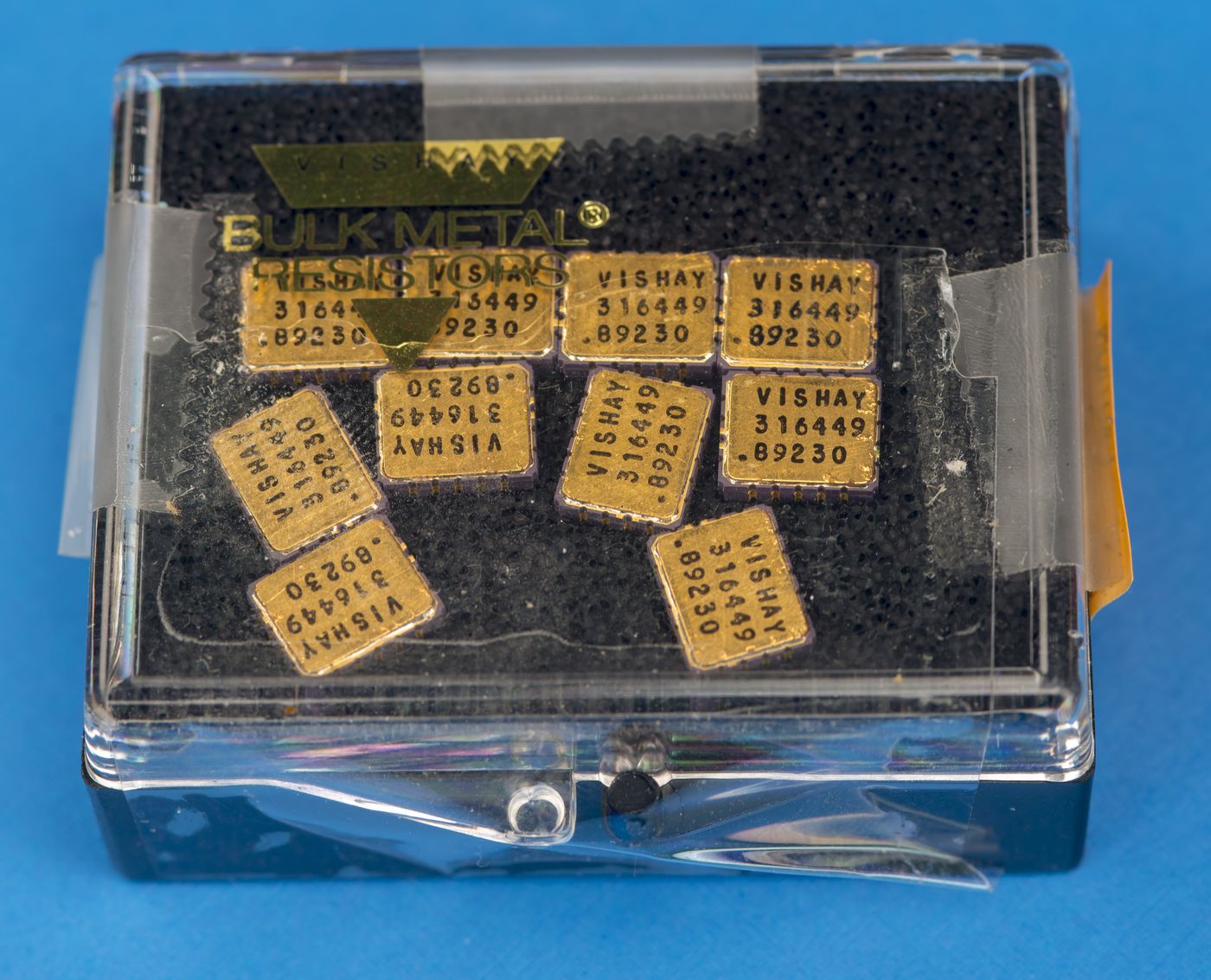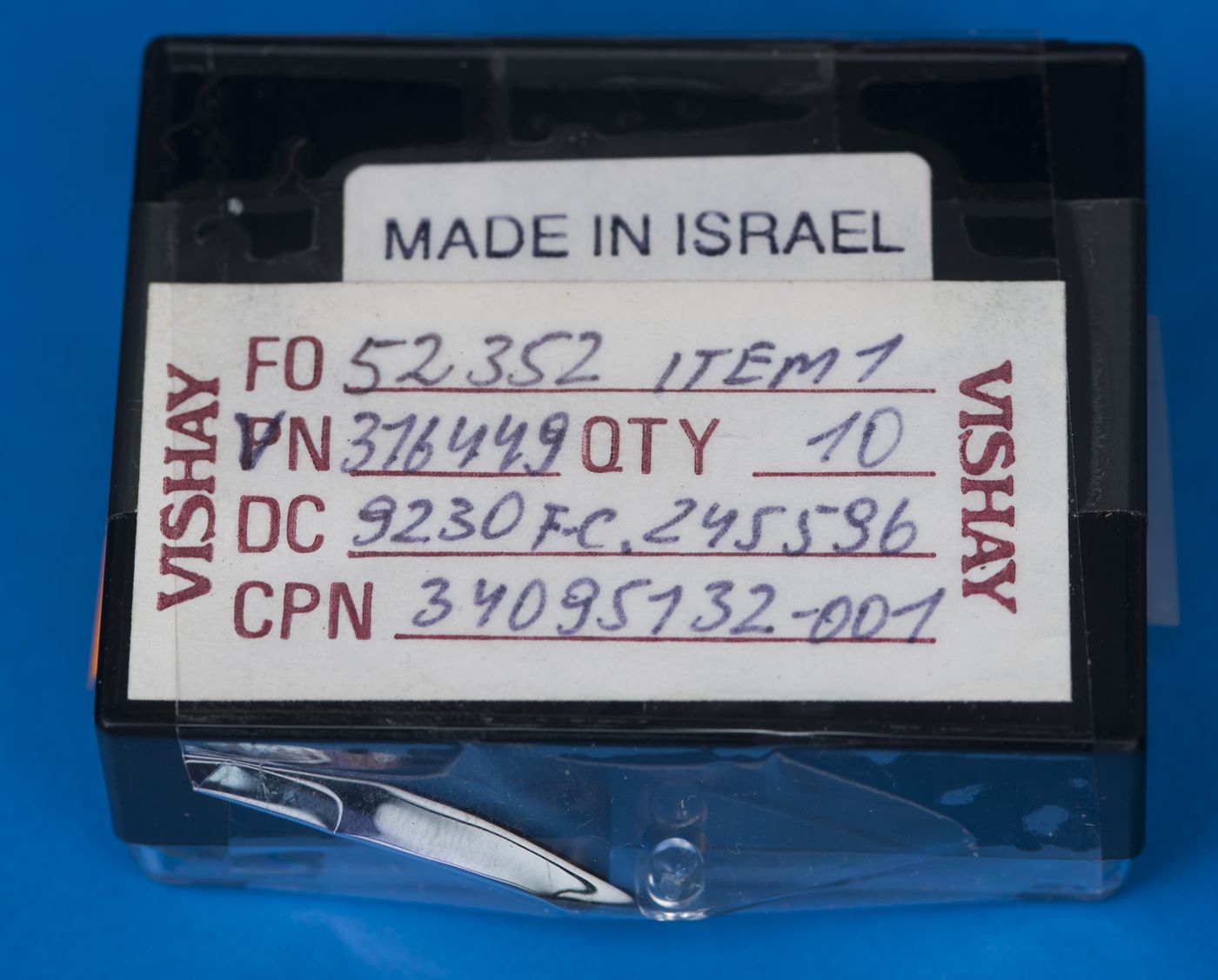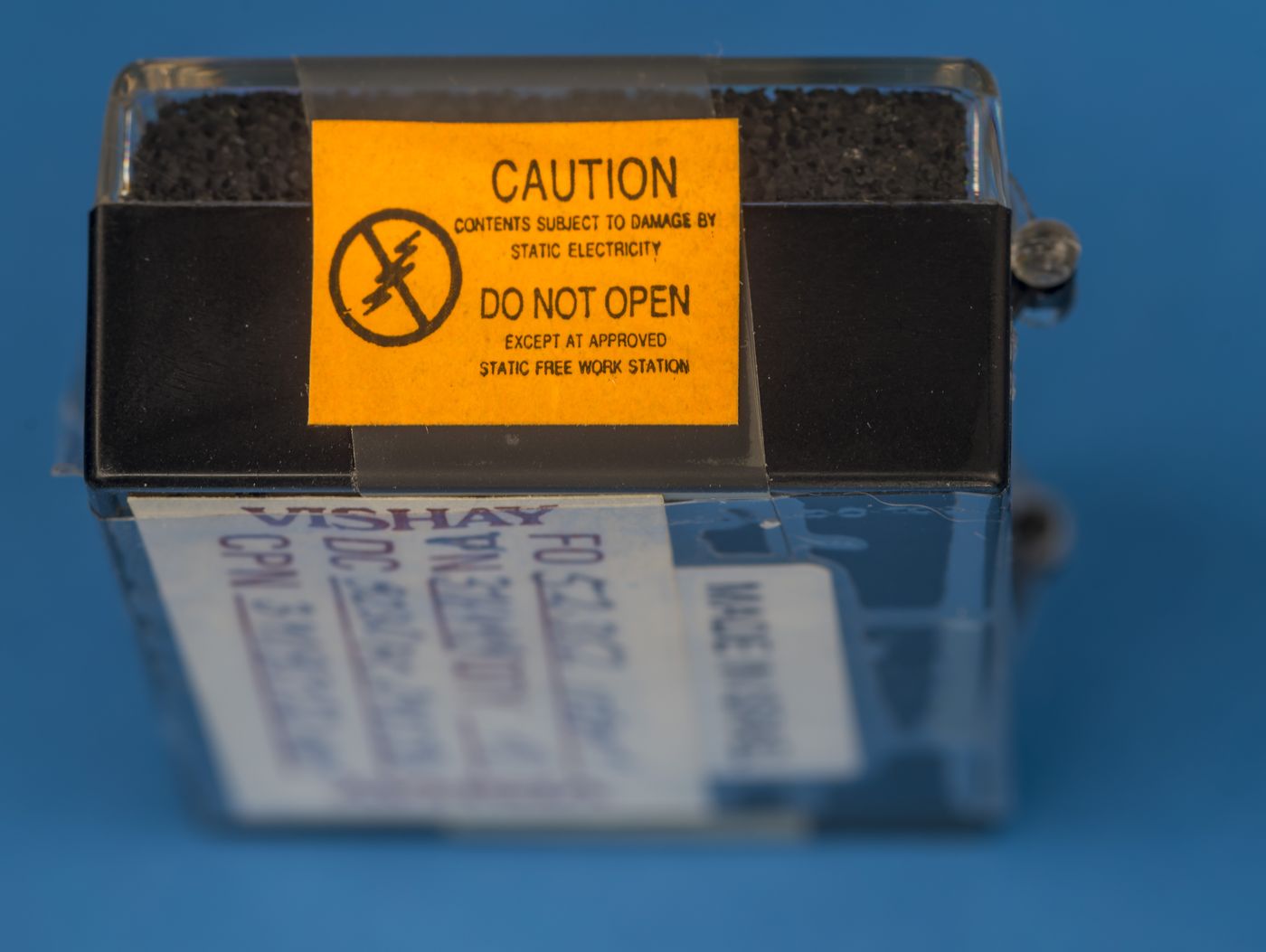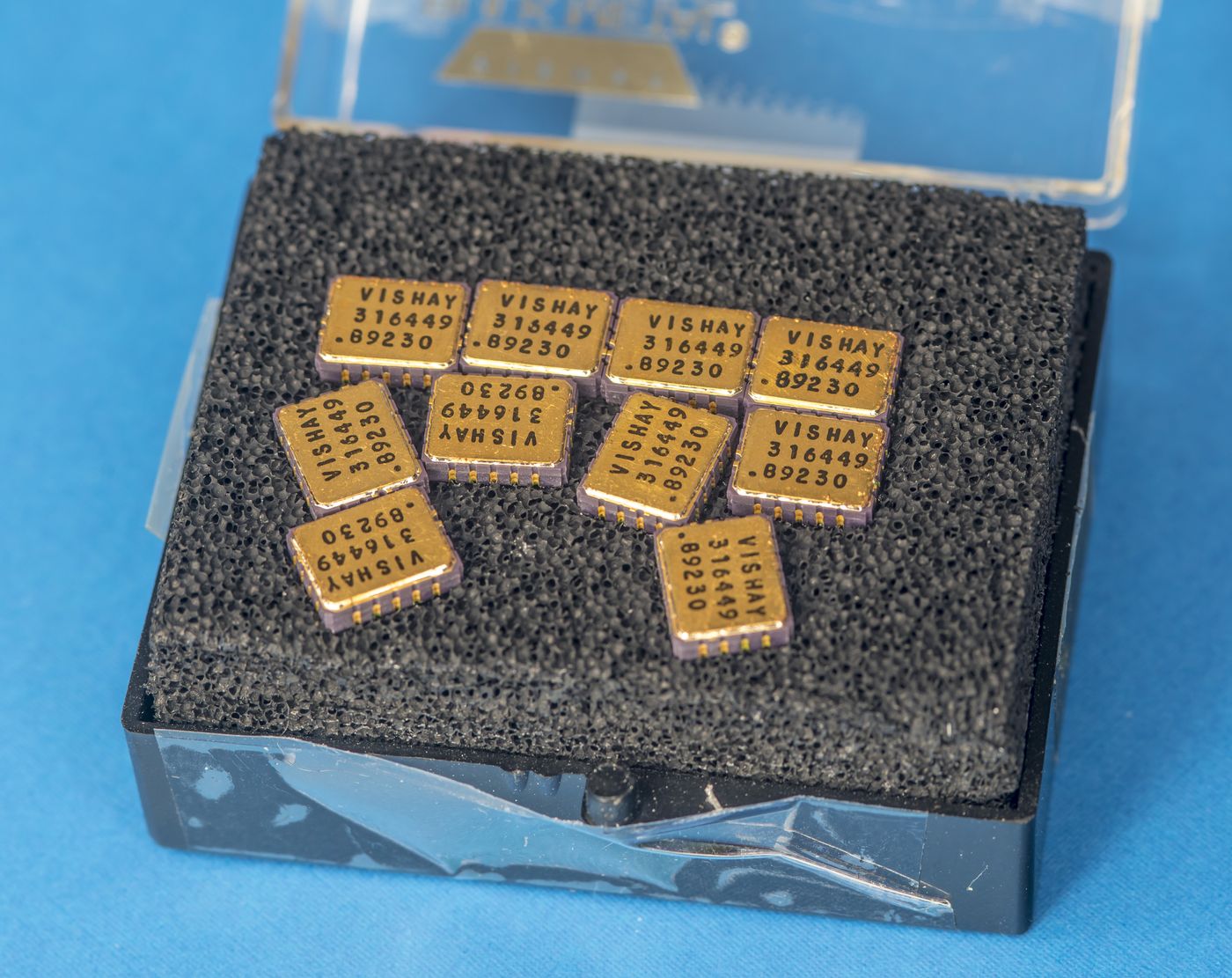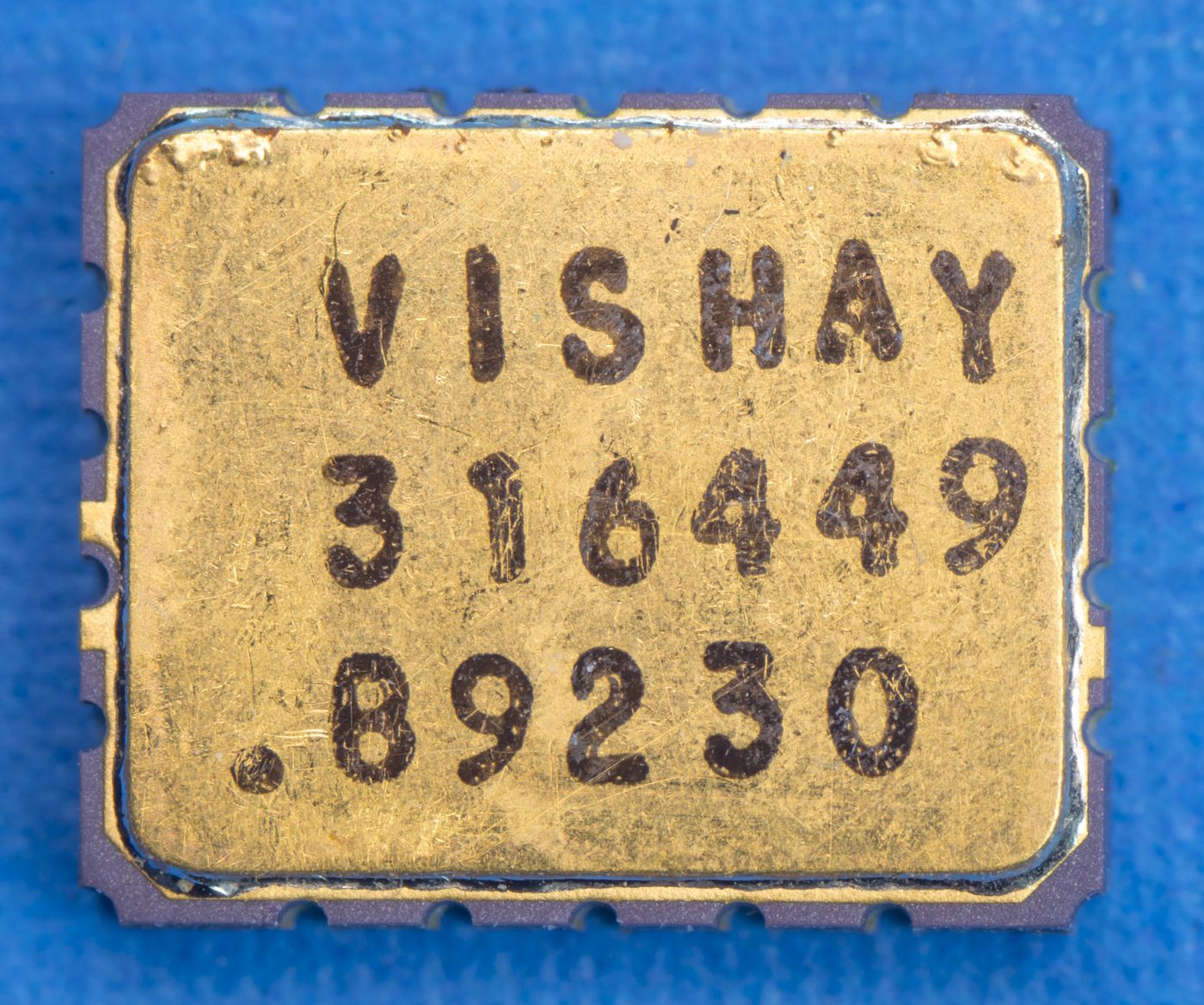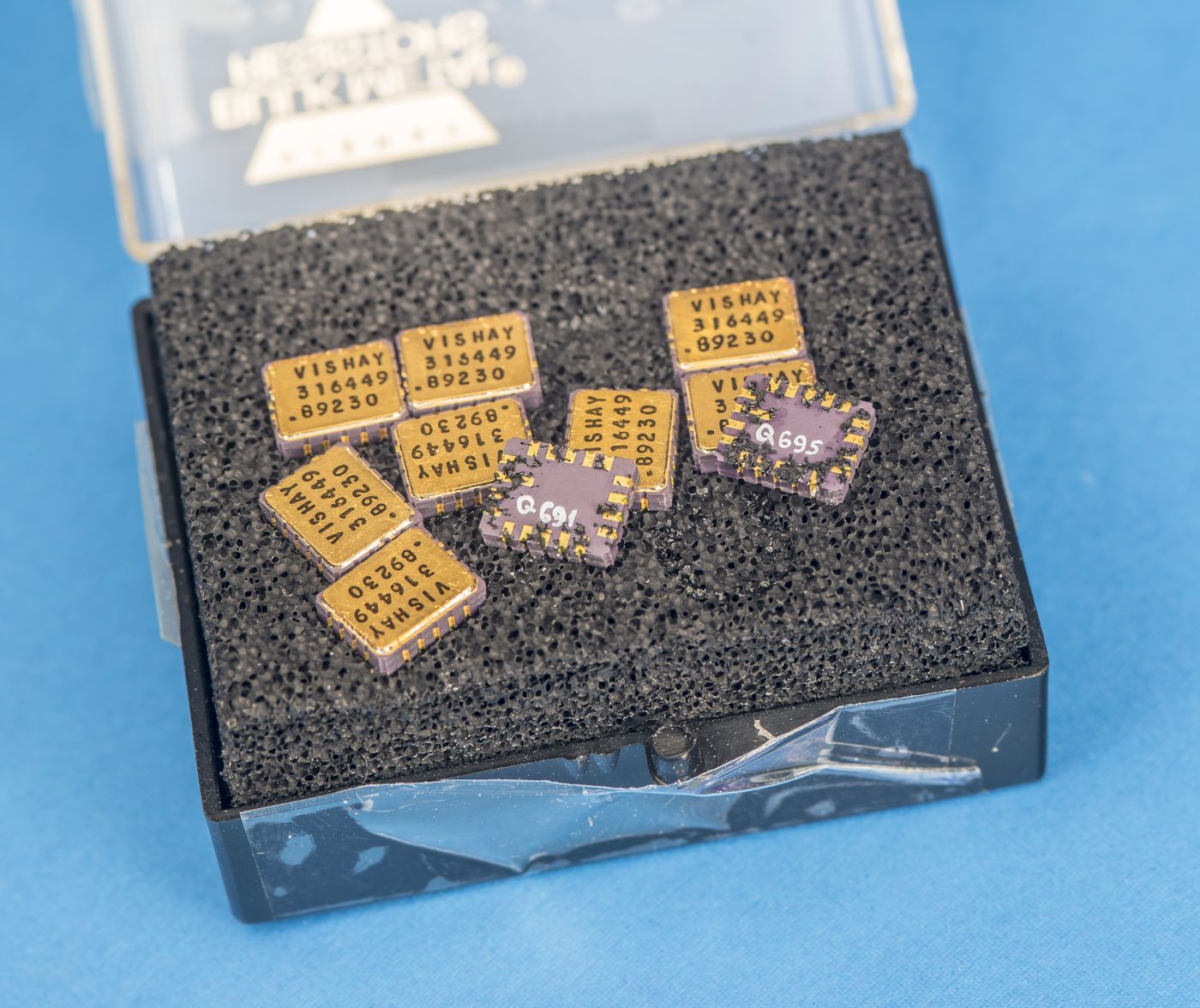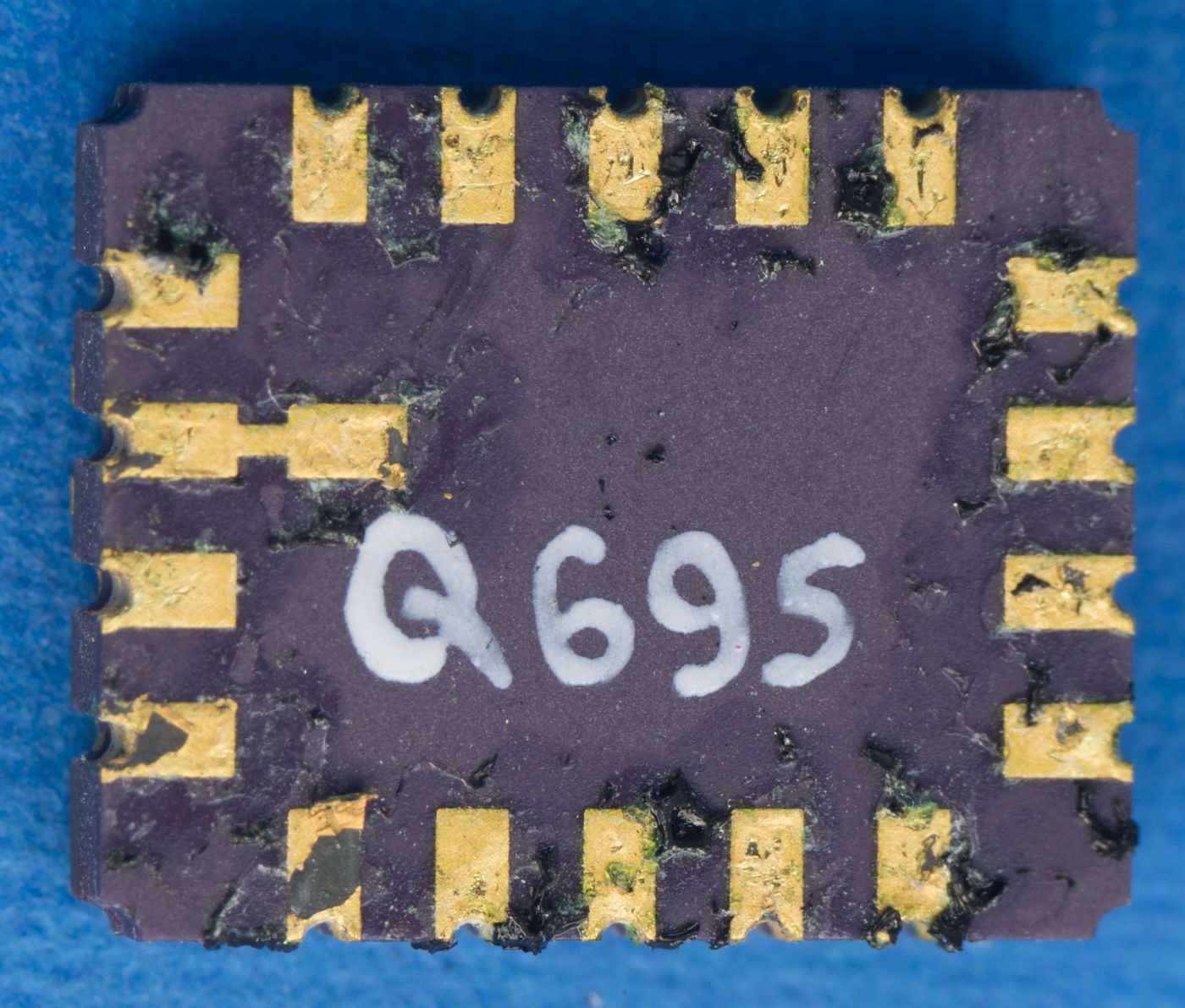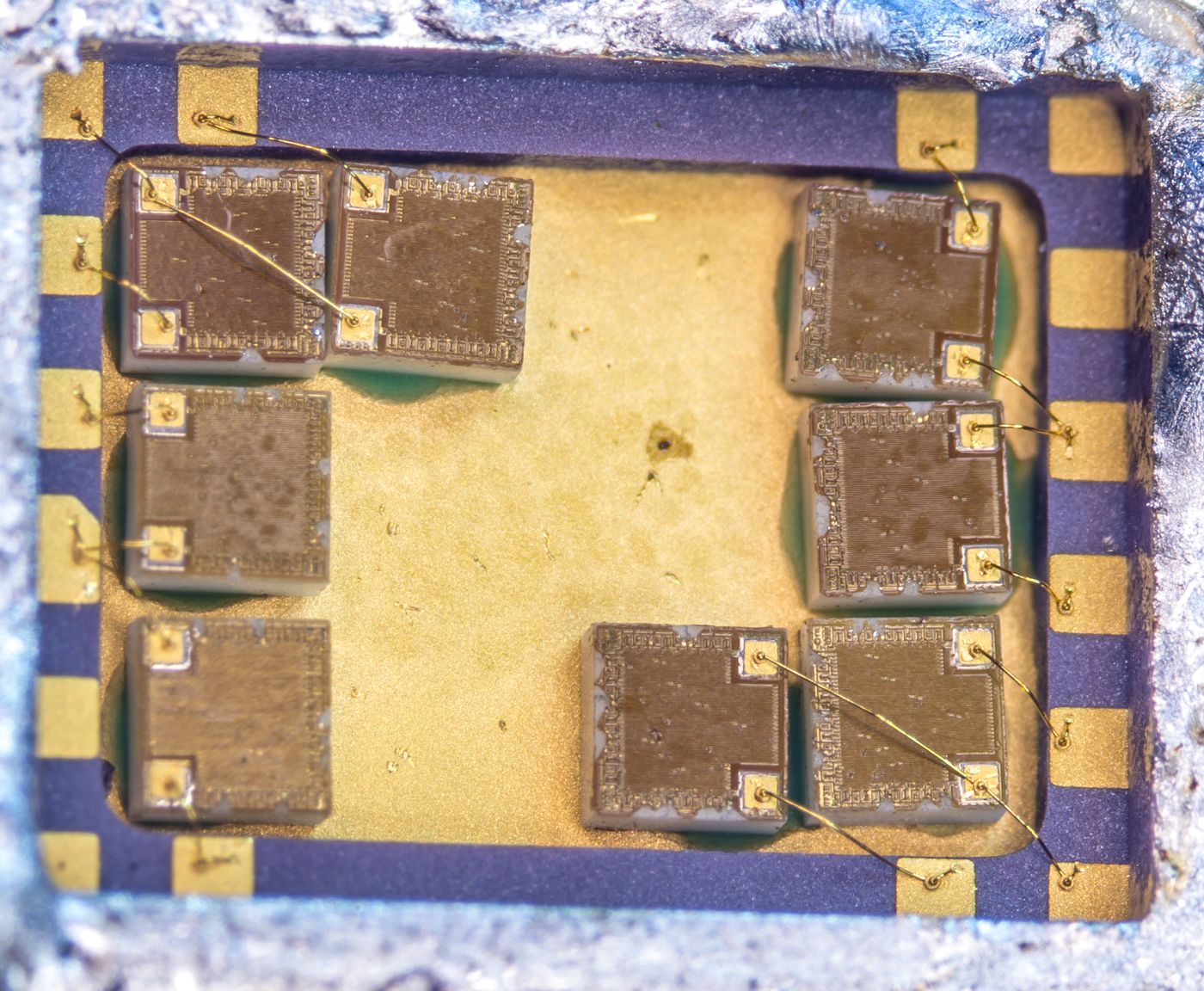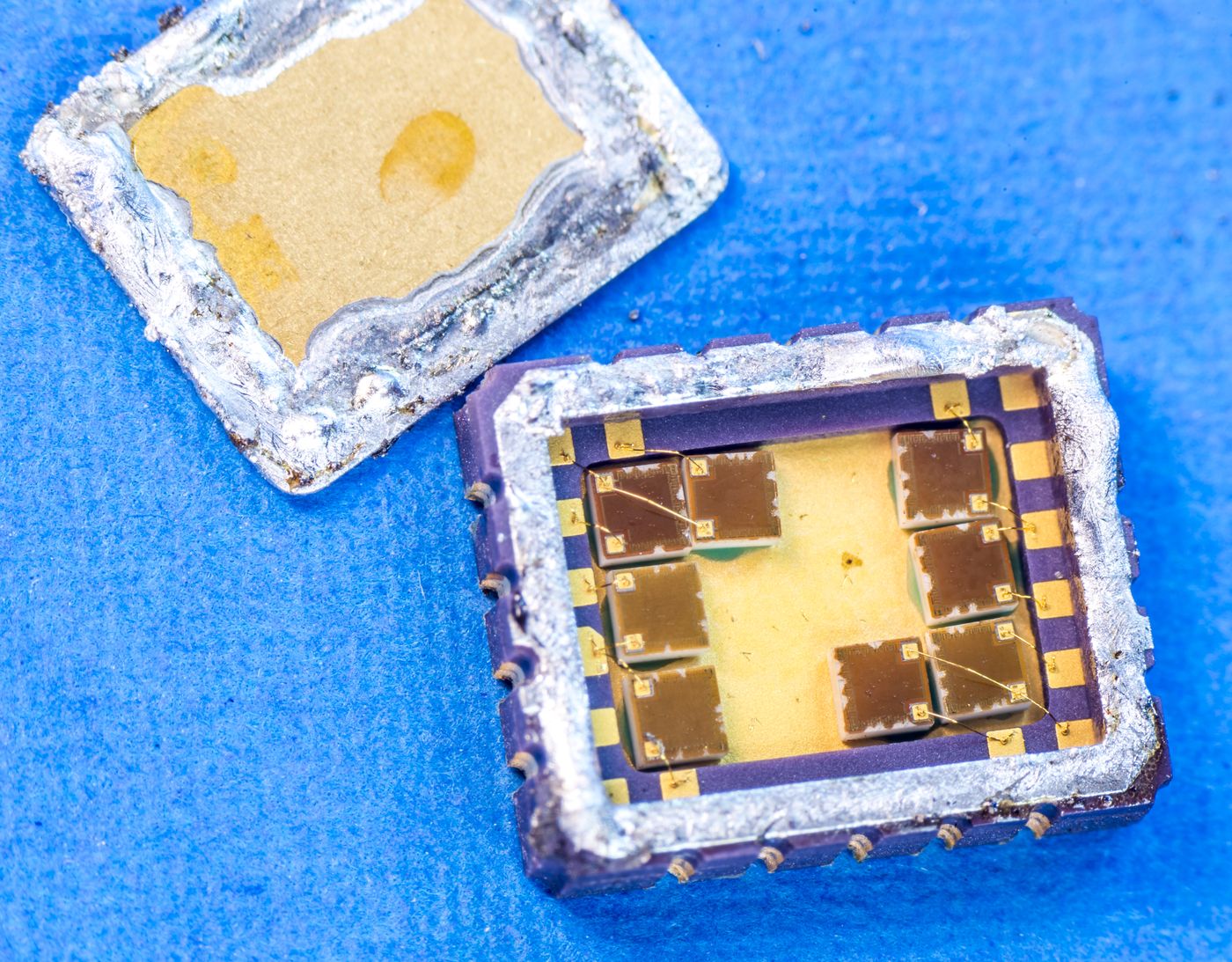More golden candies for our metrology projects and ideas! This week we can look inside of the old resistor network from Vishay Precision Group, Model VSM85. It is build using BMF elements, more commonly known by their famous VHP resistors. But unlike VHP resistors these networks are made to custom order only, with customer specified values and specification requirements.
Vishay Precision Group VSM85/86/87/88/89 Datasheet
VPG Presentation about resistor networks
VSM85/86/87/88/89 have different options for ceramic hermetical packages, with pin quantity from 18 to 32. In this case today it is 18-pad ceramic LCC which is listed as 16-pad in datasheet because middle pads at longer sides are not connected to anything internally.
All of these chips built around ceramic package with plated pads and soldered on metal lids. There are many more package variants also available from VPG for custom designs with other series as well.
Resistors were acquired from seller planet-surplus as a lot of 10 pcs in a box. Based on well aged tape and fully dried off adhesive it’s safe to assume that this box was never ever opened since 1992 :).
Label shows Vishay custom part-number 316449 and qty 10pcs, and bunch of other codes for internal reasons unknown to us.
Side of the box even had little cute ESD-warning label.
Opening box reveals pretty golden packages that look well aged. They are firmly stuck to disintegrated conductive foam which turned into hard crispy sponge instead of the foam. 30 years of time cannot not help much with unstable polymers properties.
On the top we are greeted by inked VISHAY logo and part-number, as well as manufacturing date code 30 week 1992. All 10 chips have same marking, so should be identical in internal configuration.
I’ve carefully pry two chips for measurements and further analysis.
Probing test points with DMM test leads actually started to damage the metallization and gold was very easy to flake off the ceramic. I’ll need to be super-careful when it comes to mounting these chips onto PCB, perhaps use low temperature solder to help with good connection without dissolving all the remaining plated metal. Perhaps this issue is due to old age and bad foam that might attacked the pads chemically?
Tear down of hermetic package like this is very easy. No need for dangerous acids or precision machining, just heat the lid to ~400 °C and remove top lid off the soldered ceramic carrier and we are in like Flynn.
VPG 316449 is using eight V5×5 resistor chips. Each chip is bonded to terminal contact pad by thin gold wire and glued to the conductive carrier surface with green epoxy. We can study datasheet for these resistive chip elements for more details.
Vishay Precision Group V5×5P element datasheet
These chips are essentially network of foil resistors with possibility to short sections to obtain necessary ohmic value between two gold plated pad terminations. Trims are cut mechanically or with laser, increasing resistance of the chip. By having large number of trim points resistance value of each chip can be set in “digital” manner during fabrication.
Initial measurements of one of these custom VSM85s with Keithley 2002 DMM revealed final values and circuit connections shown below:
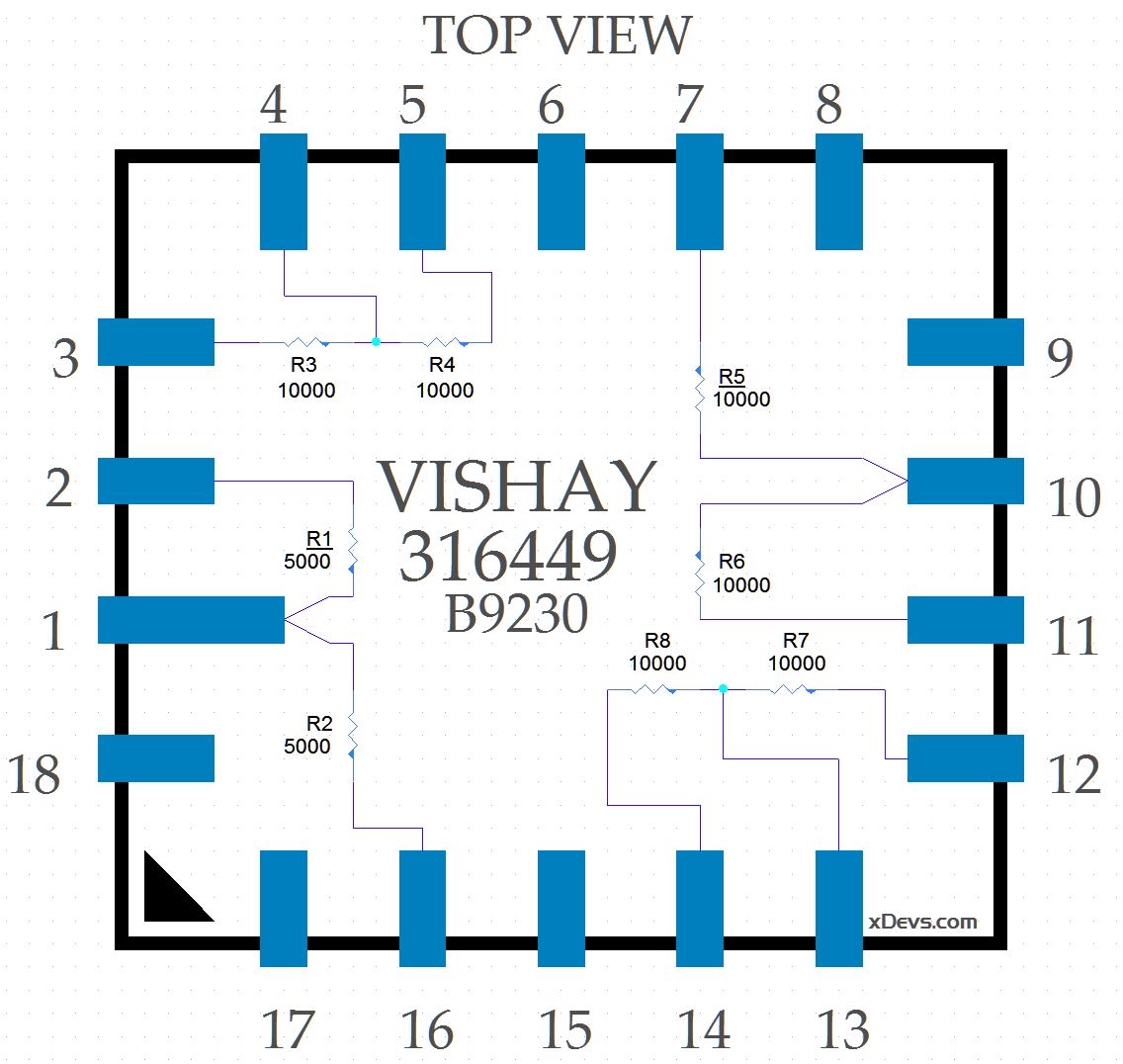
Lucky for me, this network comes with very nice values and four independent dividers. One divider use 5kΩ:5kΩ chip configuration while three others implement 10kΩ:10kΩ chips. All resistors measured well within 100 ppm from nominal value, so they are closely matched together with good accuracy.
This setup allows many interesting ideas. Like building little cute 10 kΩ standard, or making very good and stable voltage divider with fixed steps. Or connecting all networks into long series chain, which would give 70 kΩ string. Combining even small multiple of these networks opens whole rabbit hole of options. Like a decade voltage divider for linearity checks on DMMs could be built with just two of these network chips:
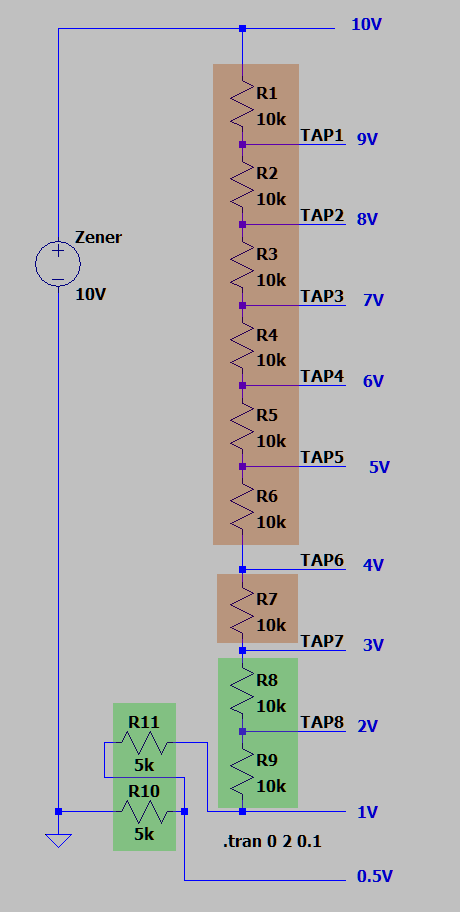
And they also look very pretty next to something like ADR1000 ;-) Also if you thought before that VHP100 resistors at $50 USD per piece were expensive, such custom networks are just next level, with starting price at US$200+/pcs depending on needed configuration and amount of chips. Hopefully this short post provide little insight about possibilities and custom resistor network configurations for demanding applications not constrained by the cost. I’d like to give credit to Todd M. for finding these little gems online and sending the link to xDevs.com. You are the best! :)
Stay tuned and let us know your feedback on this post! Discussion about this and related stuff is also welcome in comment section or at our own IRC chat server: xdevs.com (port six-zero-ten-zero, channel: #xDevs.com) or via e-mail.
Projects like this are born from passion and a desire to share how things work. Education is the foundation of a healthy society - especially important in today's volatile world. xDevs began as a personal project notepad in Kherson, Ukraine back in 2008 and has grown with support of passionate readers just like you. There are no (and never will be) any ads, sponsors or shareholders behind xDevs.com, just a commitment to inspire and help learning. If you are in a position to help others like us, please consider supporting xDevs.com’s home-country Ukraine in its defense of freedom to speak, freedom to live in peace and freedom to choose their way. You can use official site to support Ukraine – United24 or Help99. Every cent counts.
Modified: Jan. 27, 2024, 6:16 a.m.

